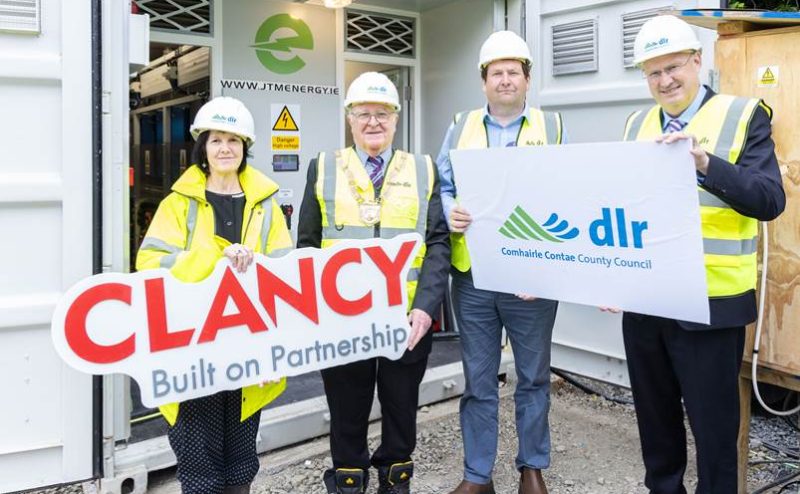
Dún Laoghaire-Rathdown County Council and Clancy Construction are working together to pilot a hybrid power system to reduce carbon generated during the construction phase of St Laurence’s Park apartments and library development. This initiative is a first for a construction site in Ireland and will lead to a reduction of approximately 70% of carbon across the lifespan of the construction project.
Councillor Denis O’Callaghan, Cathaoirleach, Dún Laoghaire-Rathdown County Council said: “dlr is proud of promoting sustainable energy practices and facilitating the trial of new products and systems. We are committed leaders and supporters of a sustainable future through innovative solutions that will benefit our communities and the environment.”
Electricity demand in construction sites is significant, often requiring multiple generators for uninterrupted power supply. This public exemplar introduces a hybrid power system comprising a single 200kVA generator and a storage battery as an alternative to three 200kVA generators. This innovative solution not only ensures a reliable power supply but also contributes to sustainability efforts by reducing fossil fuel usage and the environmental impact.
Frank Curran, Chief Executive, Dún Laoghaire-Rathdown County Council highlighted: “Implementing this hybrid power system sets a precedent for sustainable practices within the construction industry, encouraging other sites to adopt similar eco-friendly solutions. By reducing reliance on fossil fuel-powered generators, we will significantly lower emissions of greenhouse gases and pollutants, contribute to improved air quality and reduce noise in the vicinity of the construction. The environmental, economic and social sustainability of the buildings are considered in the designs of all dlr housing and civic buildings.”
Utilising a single high-capacity generator ensures sufficient power supply for the construction site’s needs. The integration of a storage battery allows for energy storage during periods of low demand or when the generator operates at a fraction of its capacity. This stored energy can then be utilized during peak demand periods, reducing the reliance on the generator.
Chris Chamber, Dublin Regional Director, Clancy said: “As part of our commitment to sustainability as one of our core values at Clancy we are continuously seeking out innovative ways to improve and reduce our impact on the planet. Construction is one of the highest carbon generating industries so anything we can do to reduce the amount of embodied carbon going into our built environment needs to be a top priority for the construction sector. We are fully committed to collaborating with clients and industry partners where opportunities arise, and we see this as a key pilot scheme on this journey towards our Sustainability Strategy goals.”
Andrée Dargan, County Architect and Energy Performance Officer, Dún Laoghaire-Rathdown County Council said: “To meet our emissions targets of net zero carbon by 2050 and to achieve a 51% absolute reduction in greenhouse gas emissions by 2030, we all have a significant role to play in changing the way we live and work. The challenges facing us include technological barriers, financial constraints, the need for upskilling professionals and tradespeople and raising public awareness. The shift towards more sustainable construction is essential, given that 40% of carbon emissions globally are from the built environment.”